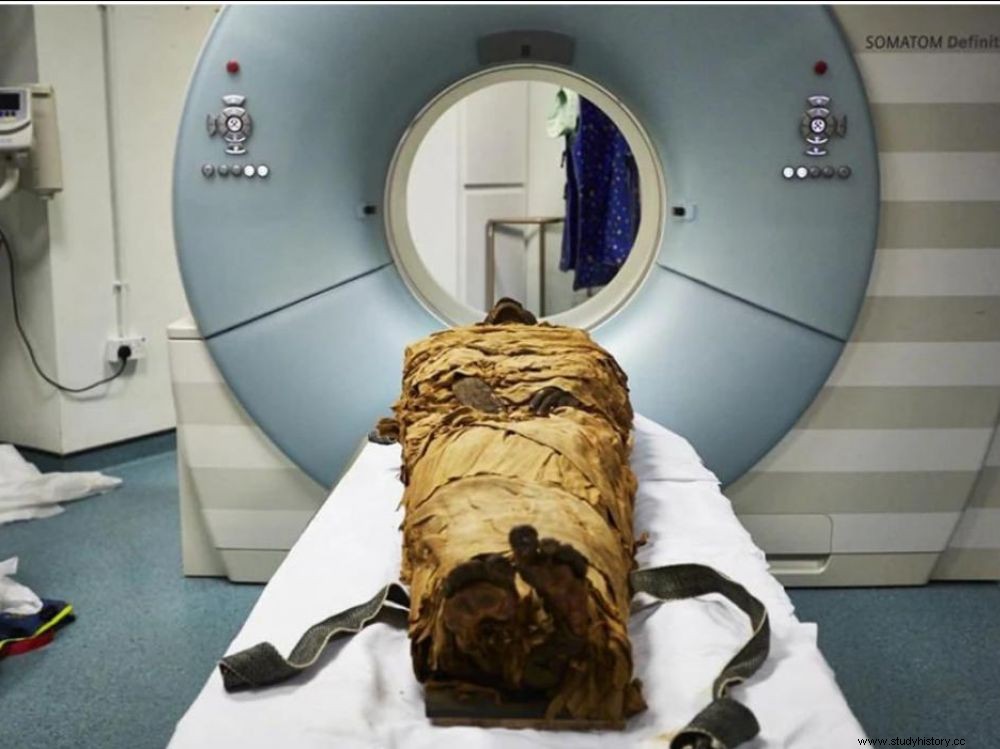Researchers have succeeded in 3D printing the vocal tract of a man mummified 3,000 years ago. Using an electronic larynx, they managed to make him utter a sound.

Nesyamon was an Egyptian priest and scribe working at the temple of Karnak, Thebes.
The voice of a man dead for 3,000 years rose in a research laboratory. American and British scientists have succeeded in reproducing the sound emitted by a mummified individual in Egypt. This is not a word but rather a "vowel sound “as the researchers explain in a study published on January 23, 2020 in the journal Scientific Reports .
Incredibly preserved tissue thanks to mummification
Nesyamon was an Egyptian priest and scribe working at the Temple of Karnak, Thebes, during the reign of Ramesses XI. Died in his mid-50s, his body was mummified but his 3,000-year-old soft tissues were incredibly preserved. A boon for researchers. The latter precisely measured the dimensions of his vocal tract (larynx to the oral and nasal cavities) using a CT scanner, an X-ray device which, coupled with a computer, makes it possible to provide sliced imaging of A part of the body. The data obtained then allowed the 3D printing of an artificial tract. Coupled with an electronic larynx, it can produce sound, audible in the Associated Press tweet below.
Unable to reproduce speech
A reconstruction of this type entails several difficulties. First, the soft tissues of the cadaver must be preserved. But in most cases, only the skeleton remains and "even when soft tissue survives, for example in mummified remains, the vocal tract may be missing or deformed ", underline the researchers. Second difficulty:the sound produced is limited by the form adopted by the vocal tract. Thus, such a reconstruction "does not provide a basis for the synthesis of current speech. To do this, one would need to know the articulations of the vocal tract, the phonetics and the timing patterns of one's language ". His lips, his tongue, were not in a position to pronounce a particular vowel. That's just how they were preserved by mummification.
Nesyamon had expressed his desire "to make his voice heard in the afterlife in order to live forever “, note the researchers. Thanks to this study, the objective of which is to demonstrate the feasibility of the method for future research, he can at least make his voice heard by scientists. is already that.
